
Mobility for Megacities: Audi AI:ME
At Auto Shanghai 2019, Audi is introducing a visionary mobility concept for the megacities of the future: The showcar, known as the Audi AI:ME, offers compact dimensions, a spacious, futuristic interior, and the ability to drive autonomously at level 4. This allows the occupants to do what they like with their time on board. The Audi AI:ME offers a broad range of high-tech features for communication, entertainment, or simply relaxation.
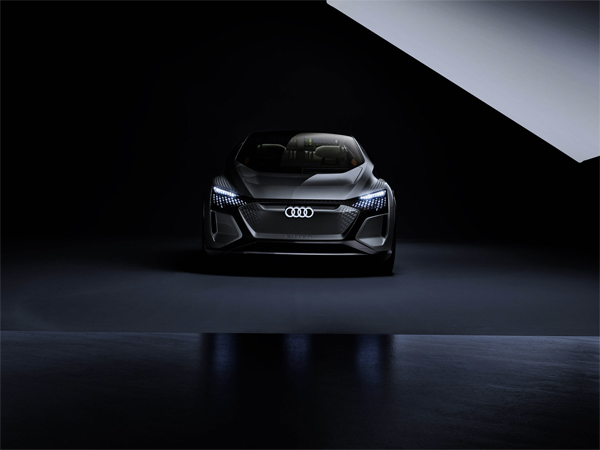
The body line of the Audi AI:ME demonstrates how emotion and spatial economy can form a perfect synthesis in an electrically driven compact car. There is a reason that the name AI:ME emphasizes the relation to the Audi AIcon, the study of automated long-distance operation introduced in 2017. The affinity of the body line and the concept of these two cars will become evident in Shanghai, as the AIcon will flank the world premiere on the stage of the Audi booth at Auto Shanghai 2019.
Compact architecture, electric drive: The concept
With an exterior length of 4.30 meters (14.1 ft) and a width of 1,90 meters (6.2 ft), the Audi AI:ME takes up as much traffic space as a present-day compact car. However, the wheelbase of 2.77 meters (3 ft) and the height of 1.52 meters (5 ft) indicate interior dimensions that are more likely to be found in the next higher class at least. This is made possible by the architecture of the electric drive. It allows for short overhangs and a large-volume interior without a propeller shaft tunnel. The drive unit is positioned on the rear axle and mobilizes 125 kW (170 metric hp).
For the occupants, the compact drive package offers a maximum amount of objectively available space, spatial comfort, and a great deal of variability. The Audi AI:ME is designed as a 2 plus-x-seater. Its layout relies on a variety of configurations for seat positions and stowage space. While only the individual seats at the front will be used during most journeys, the car offers space for up to four people in the front and on the rear bench if necessary.
Audi AI:On our way to automated mobility
Audi AI:ME and Audi AIcon: two concept cars whose very names refer to the new, two-letter abbreviation under which Audi is bundling an entire cluster of innovative mobility technologies. Audi AI is the cipher for a variety of electronic systems that relieve strain on drivers and simultaneously offer them new possibilities to use the time spent in the car. To this end, Audi AI also uses strategies and technologies from the field of artificial intelligence and machine learning. Audi AI also combines vehicle intelligence, which makes automated driving possible in the first place, and interaction intelligence, which turns the vehicle into the occupants’ partner. The name of the Audi AI:ME thus already makes the connection between AI and the users themselves.Audi AI systems are capable of learning and thinking, while also being proactive and personal. Thanks to Audi AI, models bearing the four rings will be both intelligent and empathetic in the future. They will be able to continually interact with their surroundings and passengers, and thus adapt themselves in a better way than ever before to the requirements of those on board.
Automated driving at level 4: Relax while gliding through the city
What is long established in rail transportation and even aviation is at the threshold of a breakthrough in automotive transportation—automated driving. The Audi AI:ME is designed for use in the city and for driving at what is known as level 4. This is the second-highest level on a standardized international scale for increasing automation. Although systems with level 4 do not require any assistance on the part of the driver, their function is limited to a specific area—such as highways or a specially equipped area in inner cities. In these places, the driver can completely transfer the task of driving to the system. The driver needs to resume the task only when the car leaves the area defined for fully automated driving. By contrast to the Audi AIcon, a vehicle with level-5 function that is always fully autonomous, the Audi AI:ME is therefore equipped with the traditional steering wheel and pedalry control elements in addition.
This means that the car, as well as the remaining road users, will drive automatically in a defined traffic area equipped with the corresponding infrastructure in the future. Self-regulating and self-controlling flows of traffic allow the vehicle to glide along calmly, avoiding heavy longitudinal or lateral acceleration. This is an important requirement for the occupants of the car to be able to detach themselves mentally from the traffic around them.

Luxurious refuge and high-tech control center: the interior
Audi AI fundamentally changes how automobiles are used and significantly enhances the time spent on board. The car is increasingly becoming a “third living space” alongside our homes and workplaces. It is thus only consistent that the Audi designers did not subordinate the interior of the Audi AI:ME to the shape of the body. On the contrary. They prioritized the interior and made it the core of the whole vehicle. The focus here is less on the traditional connection between driver and vehicle—steering wheel, instruments, pedals—and more on the time spent in the automated vehicle. This is why these control elements are retracted with an elegant and sophisticated choreography and are then almost fully concealed by a stowage compartment with a surface made of open-pore walnut wood.
In general: Stowage space will become more important than before in automated vehicles. The Audi AI:ME features large areas both on the cockpit cover and between the front seats that conceal a further innovative detail: Magnets serve as cup holders and hold metal cups or plates in place as required. Occupants can enjoy a relaxed meal while riding in the automated Audi AI:ME.
No matter what they are doing, the passengers can always find a comfortable seating position. The front seats are inspired by the classic lounge chair and feature a wide, comfortably cushioned seat, upholstered with textile material in warm shades of gray. The backrests are designed as curved shells that are attached to the seat cushion only with a vertical carrier. When the pedalry is not needed, drivers can rest their feet on the supports under the dashboard, such as on an ottoman. On the rear bench, which reaches around to the side sections of the car, occupants can vary their seating position almost any way they like.
The horizontal angle in the deep window in the interior is a significant element of the side section—a feature quoted from the Audi AIcon, so to speak. It offers an obvious ergonomic advantage to the occupants: It extends the range of motion of the arm resting on the door rail and also visually increases the size of the entire interior to a significant degree.
The vehicle and as the communication and interaction systems are operated by means of eye tracking, voice input, and touch-sensitive fields in the door rail. They are positioned perfectly in terms of ergonomics and are normally integrated into the surface, making them invisible. The lighting is activated only when approached, and guides the user’s gaze to the functional surfaces.
There is a multifunctional, three-dimensional OLED monitor that runs below and along the entire length of the windshield and is used primarily in dialogue with eye-tracking control. Terminologically coded function menus, for example for navigation or infotainment, can be activated with the eye and then open up further levels that move from the background into the sharp view mode on the 3D monitor.
There are VR goggles on board for the visual output of the infotainment system. They turn Internet use, watching movies, or even interactive gaming into a fascinating experience for the passengers. Audi demonstrated the possibilities that await us in the future with the Holoride system at the CES 2019 in Las Vegas. Here, the vehicle’s own movement is detected by a sensor system and then integrated interactively into the visual course of a game. Passengers feel like they are literally in the midst of the action.
The occupants experience the interior of the Audi AI:ME not simply as a means of transport, but as a luxurious atmosphere with numerous high-tech features. It also literally acts as a filter that keeps out the omnipresent traffic all around. The high-quality audio system is coupled with noise compensation that can completely suppress the outside noise level by means of active noise control. This allows occupants to enjoy meditative silence or listen to music in concert-hall quality in the Audi AI:ME.
Surfaces and structures that are familiar from the home environment dominate even in terms of the materials. High-quality textiles, some of which are made of recycled products, wood, and the touchpads in the door rails made of the mineral composite material Corian, which is particularly pleasant to touch, give the predominantly technical character of the vehicle a cozy and luxurious touch. The interior gets its special ambiance from the tension between the natural and technological elements. Large glass surfaces in the deep windows and the roof area make the interior light and transparent. Electro-chromatic control can insulate the entry of light and heat if necessary, and shield the interior with the continuously tintable windows. Filigree wooden struts in the roof area create a pergola above the interior.
The use of real plants in the interior of the automobile is a first. Vegetation, which is rarely found in the hostile city environment, gives occupants a feeling of proximity to nature and helps to objectively improve air quality in the automobile at the same time. Sophisticated filter technology prevents odors from traffic and the city from entering into the interior of the Audi AI:ME in the first place.
Systems that determine the stress levels for vital parameters also serve the wellbeing of the occupants. Intelligent algorithms allow the Audi AI:ME to get to know the driver better and better and improve their options in a specific manner.
A face in the crowd: the exterior
The Audi AI:ME is immediately recognizable even in the rearview mirror: Its face is characterized by the hexagonal Singleframe with the inverted shape and surface typical for an electric Audi. The architecture of the body is a newcomer to the pool of Audi shapes. If you look closer, though, the relation to the Audi AIcon concept car introduced in 2017 becomes apparent. Despite the completely different proportions, there are clear similarities in the precise graphics of the contours and the long arch of the roof line. But the main connection between the two different autonomous vehicles is the significant angle in the side windows.
The exterior differs strongly from the mainstream competition. The Audi AI:ME is a targeted alternative design. More than just a hint of a wedge shape, the accentuated and drawn out wheel wells that are typical for the brand and the striking window graphics create a highly emotional overall shape. The traffic area is clearly subordinate to the small space requirement: With an exterior length of 4.30 meters (14.1 ft) and a width of 1.90 meters (6.2 ft), the vehicle fits into the compact car segment. Its height of 1.52 meters (5 ft) offers great advantages in the interior in particular, and gives occupants a sense of ample space, makes it easy to get in, and offers excellent headroom. The large side doors that open in opposite directions and are fastened at the front and back also facilitate getting into the vehicle. And yet, the Audi AI:ME does not appear as a cubic van, but exudes dynamism even at a standstill. Large 23-inch wheels emphasize this appearance.
See and be seen—the lighting With the self-driving cars of the future, headlights will have a part-time job at best because the driver will be concerned with other things most of the time and will rarely need the road to be brightly illuminated. It is another function of the lighting that takes on a more important role here: communicating with other road users. The Audi AIcon already demonstrated how digital matrix luminous surfaces can use moving graphics to output clearly understandable signals relating to the driving condition and, of course, also to mark the vehicle itself.
The Audi AI:ME takes this approach one step further: As road users come even closer in the city, the traditional positions of the front and rear lights are often not visible. Because of this, Audi lighting designers integrated LED elements in the body in an unusually high position above the wheel wells, where they are visible from all angles. This 360-degree communication is an important additional safety feature for pedestrians or cyclists.
Like in the AIcon, the LED units at the front and the micro matrix projectors can use easily identifiable symbols to signal to pedestrians when the AI:ME is letting them cross the road, for example. The graphics can be projected onto the road or a wall. This function is also used to illuminate the door area to ensure that occupants can enter or exit the vehicle safely and also to mark the vehicle for other road users. The matrix projectors can also provide additional safety to other road users with weaker lighting by automatically illuminating their surroundings.
The Audi AI:ME features a further innovation: It can interpret signals from other vehicles and use its own lighting technology to amplify them if this benefits the surroundings. Example: A vehicle driving in front indicates danger with faint hazard warning flashers. The AI:ME can detect this signal and amplify it with projections and the LED units on the body so that it is clearly visible to all road users.
As a level 4 vehicle, the Audi AI:ME is equipped with bright LED headlights and perfectly visible brake and tail lights for all those situations in which drivers take the wheel themselves. When driving actively, being able to see is just as important by night as it is by day in the future, too.

Mobile for hours: the drive architecture
Audi took a targeted approach to tailoring the specifications of the AI:ME to the scope of use of a city car. This means that extreme acceleration values and top highway speeds are just as obsolete as high cornering speeds and ranges that are suitable for driving long distances. An automobile like the AI:ME will drive predominantly in the speed range between 20 and 70 km/h (12.4 and 43.5 mph) and will often have to remain mobile for hours at a time without charging. However, long ranges in terms of kilometers are less relevant than the ability to make good use of the operating time.
The engineers therefore drew on a comparatively simple, yet light, basic configuration. A battery unit with a storage capacity of 65 kilowatt hours is sufficient for meeting these requirements. A permanently excited synchronous motor that can mobilize 125 kW (170 metric hp) if necessary operates in the area of the rear axle of the AI:ME. A fraction of this is usually sufficient for keeping up with the flow of city traffic. Thanks to brake energy recuperation and its comparatively low weight, the Audi AI:ME exhibits extremely low energy consumption even in city traffic.
The axles and other components of the suspension are found in the portfolio of compact sister models of the Audi portfolio. The tried and tested combination of adaptive dampers and small unsprung masses ensures good ride comfort in the city. The body is made of a light-weight multi-material compound consisting of high-tech steel, aluminum, and plastic components, particularly in the attachments.
Audi on request: innovative offer concepts
After the Audi AIcon, which debuted at the International Motor Show in 2017, and the radical Audi PB 18 sports car, which was introduced in the summer of 2018, the Audi AI:ME is now the brand’s third vision vehicle to present an offer for use in clearly defined areas (“use cases”). While the Audi AIcon offers the qualities of a business jet for long-distance drives, the PB 18 is a vehicle for the occasional trip to the race track. The Audi AI:ME is the perfect companion for use in conurbations. A fourth vision vehicle will complete the concept quartet at the International Motor Show in September 2019.
The top priority given in the specifications for these test mules is not to design an all-rounder for the versatile and long-term spectrum of use of a heterogeneous clientele. These are highly specialized premium automobiles that can be ordered as needed and with extensive possibilities for individualization as part of an on-demand offer. This approach is based on the requirement profile of many customers, especially in urban areas, which is undergoing a transition. Automobiles are to be available and ready for use upon request and should ideally be custom tailored, but they need not pass into permanent personal ownership. However, premium customers still demand that they can order their automobiles with as many individual features as possible—and, of course, with the same high quality they are used to and expect—from the Audi.
Customers who book a vehicle will then not only get their desired vehicle, but can also have it configured to suit their personal preferences as far as possible. The color, interiors, and technical options can be pre-configured online with the app or via the driver details stored in the “myAudi” system. Even drivers’ preferred interior temperature, the perfect ergonomical seat adjustment, and their personal music library are already activated when they get into the car.
This offer is accessible and easy to use via an app that connects the vehicle order, personal preferences of the user, and numerous options that can be used while driving. Users make use of this app to order their Audi AI:ME and can preorder the car with two or more seats, and even a child’s seat, as required. They will find the AI:ME at the requested time and in the agreed-upon place and can simply park it somewhere after using it. In zones with the appropriate equipment, the vehicle can even travel between the depot and the customer’s address without a driver.
The app, which is operated via a smartphone and in the car itself, also serves as an assistant and intermediary for many other services. For example, it can be used for spontaneous communication with friends via the Internet or social media. Users can take selfies on board and share them in social networks. They can access the entire Internet for the purposes of entertainment, research, and service. Users can order food on the way and make a quick, automated stop at a restaurant to have it delivered to the car, and then enjoy their meal in the vehicle on their way home.
The connection between the user’s home network and the Audi AI:ME even allows users to continue watching a movie using the VR goggles in the car, picking up where they left off at home. On their way home from work, they can close their eyes, enjoy the silence on board, and relax.
The Audi AI:ME becomes a fixed point in its user’s personal digital biotope. The tedious daily journey from A to B turns into an enjoyable ride with free time. After they have arrived at their destination, the users can get out of the car, relaxed and in good spirits, and do not even have to look for a parking spot or charging station. The Audi AI:ME will find its own way back to the depot.
“Audi on demand” is available in metropolises on several continents and is already the perfect example of the future expansion of Audi’s offer into a global mobility service provider. With the simultaneous expansion and specialization of the vehicle fleet, this program will become even more attractive to customers with high demands in the future. The premium vehicle offer itself and the digital integration of the automobile and living environment will give the Audi brand a head start in this segment, too: Vorsprung durch Technik.
BIBD 14th Home Showcase Festival

Datin Paduka Dr Hajah Norlila binti Dato Paduka Haji Abdul Jalil, Permanent Secretary at the Ministry of Culture launching the BIBD’s 14th Home Showcase Festival

It’s the 14th edition of the BIBD’s 14th “Home Showcase Festival” and this has become a household name in Brunei Darussalam. I remember attending almost all their home showcase events but to date, this is the biggest because it’s held for three days (12th to 14th April).
Buying a home has slowly become a culture among Bruneians and BIBD wants to ensure that home buyers’ dreams can become a reality by facilitating their needs with every step of the way.
According to Hajah Nurul Akmar binti Haji Md Jaafar, BIBD Head of Retail Banking, the Home Showcase will benefit the home owners and also providing a one-stop platform for current and prospective homeowners especially the young professionals.
Officiating the ceremony last Friday was Datin Paduka Dr Hajah Norlila binti Dato Paduka Haji Abdul Jalil, Permanent Secretary at the Ministry of Culture, who spent quite some time visiting all the vendors that participated in the Home Showcase Festival.
Of course, let’s not forget BIBD’s QuickPay function where it’s cashless payments where you don’t need to fork out your physical money. I have been actively using it and I find it very, very convenient. The adoption rate was pretty good during Brunei’s MSME where the usage of QuickPay doubled, showing signs that people are ready to go cashless.
Customers can also get a BIBD NEXGEN Foldable Shopping Bag as long as stocks last with a minimum spending of BND10. The event also served as an avenue for local entrepreneurs and small and medium and enterprises (SMEs) as well as partnering realtors and interior designers to showcase their products and services.
BIBD Seeds, a special program for “Special Mothers Empowerment Entrepreneurship Development” Programme, aimed to transform underprivileged mothers into successful and resilient entrepreneurs, and some of the BIBD Seeds participants were present to sell their food and beverage business. Some of them will be graduating by end of April 2019 under the BIBD Seeds programme and soon, the second batch of entrants will partake in this successful program.
BIBD Home Showcase ends this Sunday. So do drop by BIBD Kiulap later and check out your home needs and also the local vendors participating in the event.
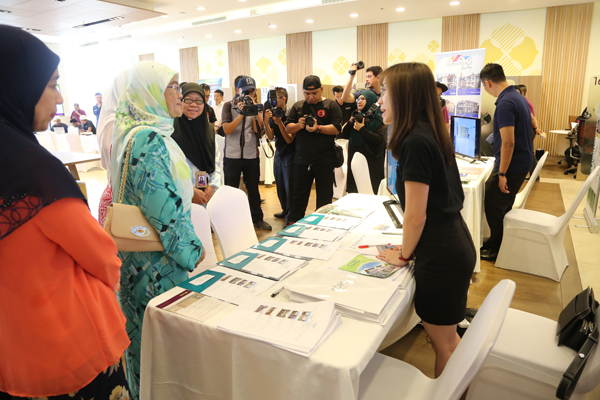
Guest of honour visiting the realtors

@kapintar.bn

Some of BIBD’s Seeds

Ken View pavilion

Awesome range of home deco and interior design by Ken View

@bloomproject.co
Edu Champ Academic

An up and coming tuition school, Edu Champ Academic aims to change the way Brunei sees education – one neighbourhood at a time. With affiliated branches in Mentiri, Berakas, and Rimba – and more on the way, the goal is to make quality tuition available to as many corners of the country as possible.
“Our vision is to be a friendly neighbourhood tuition school. I have students from Masin, Serasa and even Tutong! That’s why we try to open in so many places – to make it more convenient for the parents”, said Sumi, one of the founders of Edu Champ Academic who teaches at the Rimba branch.
Founded in 2017, Edu Champ Academic saw the need for accessible and affordable education to the citizens of Brunei. They wanted the opportunity to not only help the students, but also the parents and teachers – by saving funds on transportation fees and reducing class sizes so learning can be more effective.
“We actually wanted to explore up to what extent a tuition school can be developed into. Because in Brunei, a traditional class would be like, 4 classrooms, whiteboard, the teachers come and teach, and that’s it. But actually, it can be something more, or beyond that. With small class sizes, the teachers can focus on individual students better,” stated Wong Teck Sion, who is responsible for the day-to-day operation of Edu Champ Academic.

Edu Champ Tuition branch at Mentiri
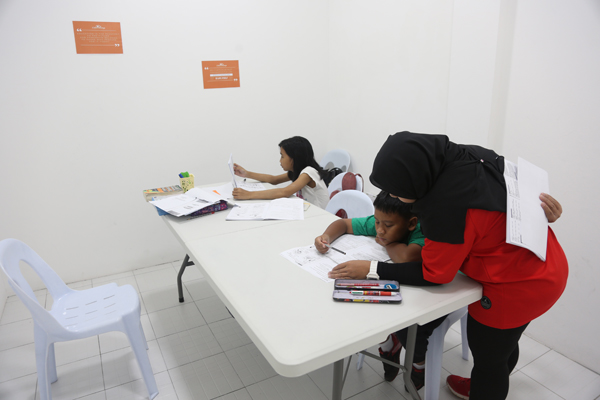
Tutor giving guidance to a student
Teachers of Edu Champ Academic are also not restricted to one tuition school and are able to move between affiliated tuition branches. This way, students can have their teachers close to them instead of driving long distances for education. In addition, the teachers themselves can choose to take on more classes at different schools, supplementing their income with extra earnings and providing a more stable employment.
“We want to be able to set standards of how tuition schools are being run in Brunei. We want those who are running home tuitions to come out, to use our facilities and teach. We have different visions of trying to establish ourselves as a neighbourhood tuition school. And trying to encourage more people to come in and see tuition as a career. Which means we are moving forward with the MOE agenda,” stated Allen Ang, who plans for the growth and expansion of the tuition school.
For more information on the locations of each branch of Edu Champ, as well as the range of subjects that they offer, visit www.educhampacademic.com or follow their social media accounts at @eca_tuition_school for IG and educhampacademic for FB.

Kids being tuted at Berakas outlet

You can also learn foreign language such as Japanese

Another outlet at Rimba
Aifa undergoing LG training
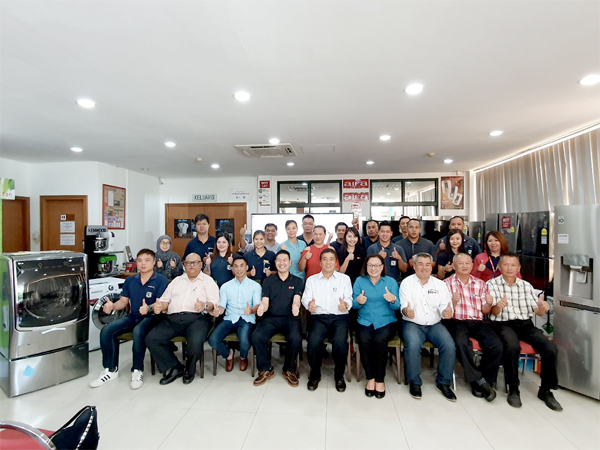
The management of Aifa Sdn Bhd with Tan Wee How, Product Trainer/In-Store Management, LG Electronics Singapore Pte Ltd (fourth from left) during the LG training workshop yesterday at Aifa Headquarters, Lambak Kanan Industrial Area.

Mr. Andy Lau, Managing Director of Aifa Sdn Bhd, in his opening remarks before the start of the LG training workshop
Yesterday, Aifa Sdn Bhd, a sole distributor for LG, held a training session for the staff to be familiar with the current LG products ranging from washing machines to refrigerators to audio visuals (TVs). The training session was held at Aifa HQ at Lambak Kanan Industrial Area.
Present during the training session were Mr. Andy Lau, Managing Director of Aifa Sdn Bhd and Madam Lily Ngo, General Manager of Aifa Sdn Bhd. Conducting the LG training was Tan Wee How, Product Trainer/In-Store Management, LG Electronics Singapore Pte Ltd. He conducted a day workshop for the staff of Aifa to learn the functions and features of LG products that will be sold in Brunei Darussalam.
Mr. Andy Lau said that LG is one of the top products worldwide and he believes that it’s important for the staff to be aware of the LG products. Otherwise the products will be meaningless to consumers. Hence, training is very important in order for the staff to be fully equipped with the product knowledge and know-how so the consumers can feel more confident on LG products.
The training is normally conducted every one and a half year where the trainer is flown to Brunei as LG keeps introducing newer models/products. Hence training is very necessary.
Mr. Andy hopes that the consumers will enjoy the LG products that Aifa offers. With Hari Raya around the corner, why not invest in LG products? 🙂
For your information, Aifa company is as old as Brunei Darussalam’s National Day.

Also present was Madam Lily Ngo, the General Manager of Aifa Sdn Bhd

One of the most popular products from LG is the refrigerator
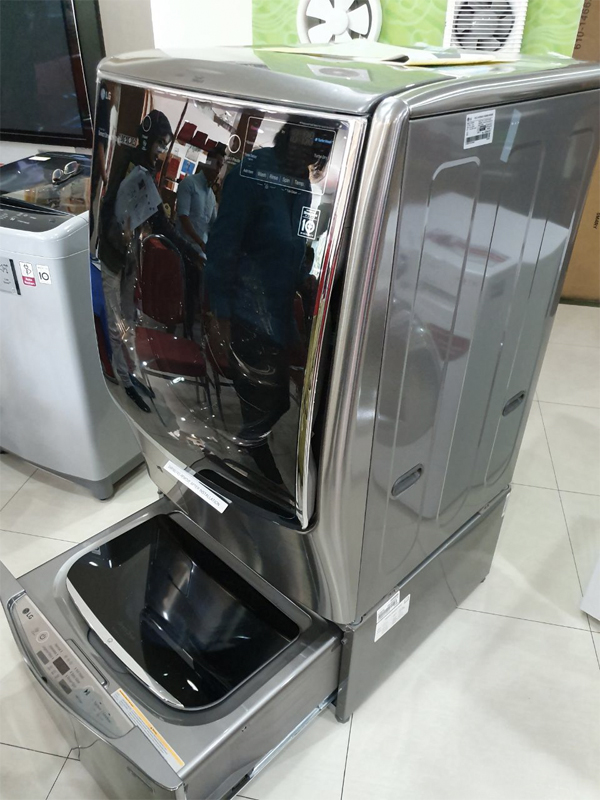
LG TWINWash™ and this looks pretty convenient

LG is also known for their TVs. The 4K TVs are gaining steam

Our dinner session with the Aifa Team and a representative from MMW and LG.
MSME Festival 2019

Yang Berhormat Dato Seri Setia Dr. Awang Haji Mat Suny bin Haji Mohd Hussein in his welcoming remarks on the first day of MSME Festival 2019

The guest of honour with the panel of speakers for MSME Festival 2019
My first impression – Very, very impressed for once. I have seen many local expos in Brunei and this is maybe the right mix of all sorts kinda expo. I’m quite glad that Darussalam Enterprise (DARe) initiated this exhibition known as MSME Festival 2019 (stands for Micro Small Medium Enterprises). The four day event is taking place at the halls at BRIDEX, Jerudong.
It was a nice touch to see more than 200 vendors participating in the first ever Brunei MSME and this will eventually alleviate the presence of their businesses to the consumer ends apart from their presence on the social media platform.
Most of all, I am quite surprised that there are many uprising local vendors that I don’t know such as @ultimatewallet and @lunalid to name a few. Of course, you won’t be leaving the BRIDEX area hungry as there are many eateries to choose from, the biggest group being the food vendors from the BIBD Seed initiative.
If you are still into white rabbit, the local ice-cream vendors such as Rumah Gelato, Kyna, Project Ice-cream and Happy Cream are selling them. Though I wonder if the phenomenon of the White Rabbit has died down a little. My personal favourite is still from Kyna because I prefer solid types and you should try their blackcurrant flavour. Me loves…
I do hope one day the local vendors can expand their horizons out of Brunei. As for now, Brunei’s non-oil related exports only accounts to 3% which is pretty low. I would say we are heading to a right direction and yes, step-by-step, create a good business portfolio, then expand nationally and sustaining the business before pursuing the overseas market.
Oh yea, MSME Festival also has a good line up of forums, local and international speakers, speaking on the topics of entrepreneurship and growth. There are speakers such as Noor Azian Romlan, Director MATRADE, Sabah Regional Office, Pg Mohd Khairi bin Pg Haji Metussin, CEO, Mindplus Edu, Dr Nur Rahman, CEO, Ghanim International Corporation, Fione Tan, CEO, 28Mall.com, Anderson Lim, CEO & Founder, Nimanja, Azri Jumat, CEO & Founder, Rotuku Group of Companies, Christy Ng, CEO & Co-Founder, Christy Ng Shoes and Keeran Janin, CEO & Founder, Avantist Watches.
I would visit Brunei MSME once again before it ends. See it as a localized Consumer Fair kinda of thing. Parking can be a hassle but I would say it’s worth a visit. Do go in the day time or you might be disappointed when food vendors’ food runs out.
The opening ceremony of MSME Festival 2019 was launched by Yang Berhormat Dato Seri Setia Dr. Awang Haji Mat Suny bin Haji Mohd Hussein.
You can check out MSME Festival 2019 details here.

Do visit Sparks Park at Hall 2, BRIDEX
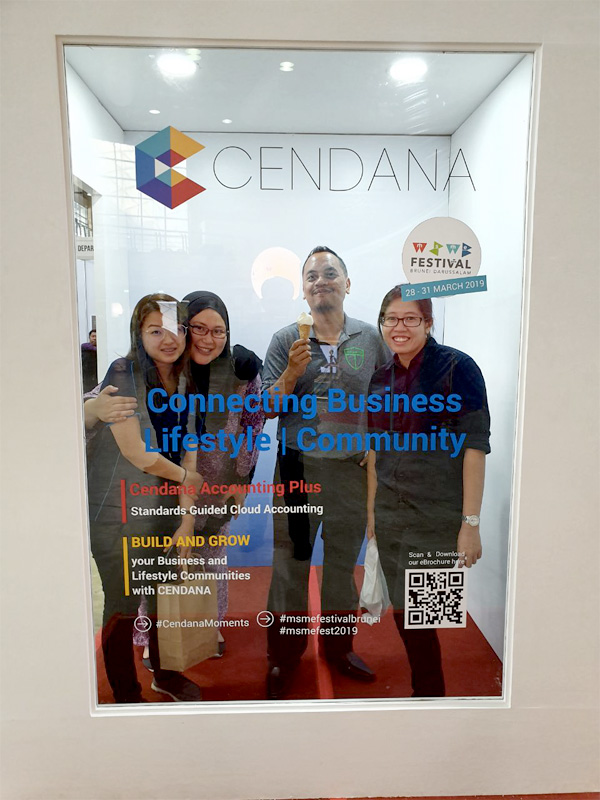
At Cendana Booth

Madison

Check out @lunanid pins 😀

One of the speakers at MSME Festival 2019
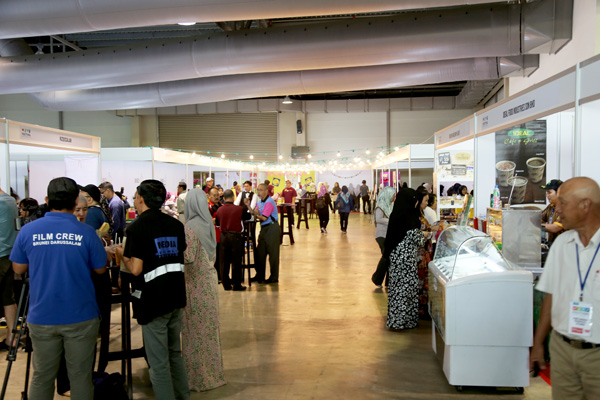
Many food vendors

Another forum on the first day in the afternoon

I bought myself a pin from Lunanid

Check out BIBD Seed food vendors

Interesting wallet concept from @ultimatewallet

Oh yea, I have been paying my things at MSME Festival using Progresif Pay

Seng Yee craving’s for Alin’s Legacy

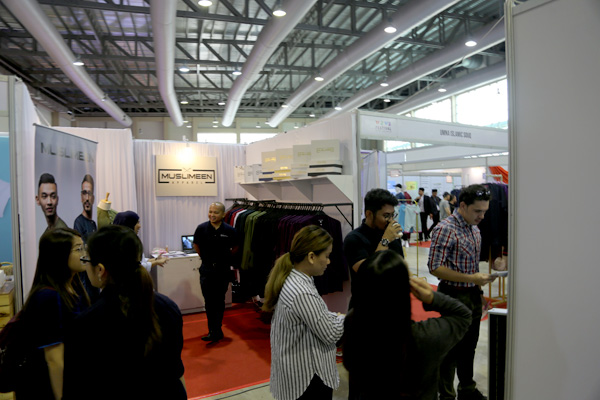
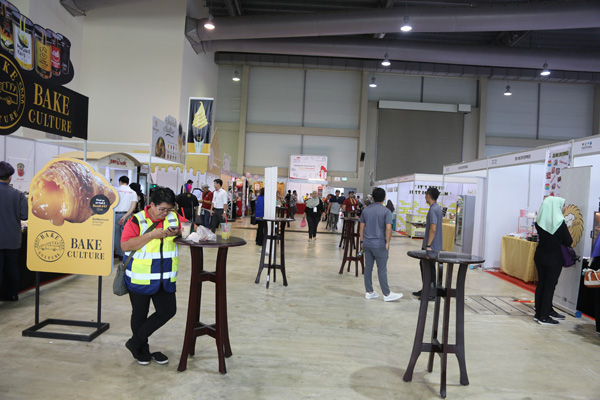
Cashless payments on the rise

Radi El-Fassed, Progresif’s Head of Product Development, Dr Gyorgy Ladics, BIBD Chief Operating Officer and Hajah Nurul Akmar binti Haji Mohd Jaafar, BIBD Head of Retail Banking addressing the media on cashless payment trends yesterday
We are heading towards a cashless society. It takes two to tango though – the consumers and also the merchants (retailers). It was easier to adopt when a bank introduces newer convenient services then such as ATMs, followed by online banking and transferring money through your mobile phones to another account. Now BIBD has provided a better platform where you can pay your services and goods through your mobile on selected merchants. This basically mean you don’t have to use physical money to pay over the counter. All you need is just your smartphone and waalaaa, you don’t need your change back physically and plus you will look cooler just by paying your items using your phone.
Yesterday BIBD emphasized how branchless banking have made it so convenient for their customers as it allows everyone and anyone to have access to financial services and they don’t even have to physically drop by a bank to do so. I was quite surprised that BIBD NEXGEN Wallet has generated more than 14 million worth of transactions in 2018 alone. That’s pretty high for such a small country like Brunei Darussalam. This really shows how technology has made it easier for the flow of money from one account to another account at your finger tips. Actually I am a high user of BIBD NEXGEN Wallet as I have received and send payments through the BIBD mobile app.
The next step now is to actually capitalized on the latest featured made possible by BIBD and Progresif and that is making payments to the merchants using your phone through BIBD’s QuickPay and Progresif’s Progresif Pay.
Present during the demonstration and press conference were Dr Gyorgy Ladics, BIBD Chief Operating Officer , Hajah Nurul Akmar binti Haji Mohd Jaafar, BIBD Head of Retail Banking and Radi El-Fassed, Progresif’s Head of Product Development.
In the press release, Mubashar Khokhar, BIBD’s Managing Director and CEO, said that whilst BIBD have placed efforts into encouraging the adoption of a digital Bruneian economy via our own technologies that resulted in over 140,000 BIBD NEXGEN banking users, they remain cognisant we need to go further and evolve if we were to create more impact for a truly digital economy.
With mobile penetration, it will create even a bigger digitized financial ecosystem and it will help spur the economy due to the convenience. This will also be a win-win situation for both consumers and even the merchants because of the lowered set-up costs and the barrier to entry (in business) is low too.
So far, they are 100ish merchants that have used QuickPay and one of the leading merchants is Fuel’d, a popular healthy food joint in Kiulap. As more people getting the hang of using digital payments through mobile phones, future merchants/retailers will see the surging demand of cashless payments through means of paying through your mobile phones.
Progresif’s latest product Progresif Pay have entered the market and now they have even bettered their mobile app. You don’t have to be a Progresif subscriber to make use of Progresif Pay (Awww, nice of you) and you can switch numbers through the App as well at your convenience. I am happy for the fact that you’re able to buy iTunes credit through their e-credit tab on the Progresif Pay. Now that’s very convenient.
If you really want to know more about BIBD’s QuickPay and Progresif’s Progresif Pay, head over to MSME Festival to be held at the BRIDEX International Conference Centre 28th to 31st March and you will see some vendors (especially the ice-cream vendors) making use of these said services. You will see how convenient it is to make payments and furthermore, it is secured.
What I am more excited is that you can even pay through means of NFC where you simply tap on your smartphone on the merchant payment terminal and your transaction will be completed, just like that. Easy, huh? I know Brunei is currently behind when it comes to NFC or payments through mobile phones but the momentum is slowly growing and kudos to the first 100 merchants in believing the power of cashless transactions.
We are definitely heading on the right direction and thank you to BIBD and Progresif on making this service available in the Brunei market.

A demo on how easy it is making payments over the counter through means of your mobile phones

BIBD Aspirasi winners, Round 2

Both winners Mohammad Hasnal and Izzati bin Mohammad Masli were full of emotions after their names were drawn to win the BND 25,000 cash prize (quarterly) as part of BIBD’s Aspirasi campaign earlier this afternoon at BIBD Kiulap.
It has happened again. The second batch of the quarterly winners have been feted. Mohammad Hasnal and Izzati bin Mohammad Masli both won the BND 25,000 each as part of the BIBD’s Aspirasi campaign earlier this afternoon.
BANK Islam Brunei Darussalam (BIBD) recently drew out two quarterly and 10 monthly winners for its BIBD Aspirasi reward programme a few days ago and only today, the draw was conducted by Dr. Awang Abdul Nasir bin Hj Abdul Rani, a member of the Shariah Advisory Body at BIBD.
The idea of BIBD Aspirasi is to make people be aware the importance of savings and also to inculcate the savings culture within them and at the same time, supporting the customers to reach their financial goals and even preparing for the unexpected.
The prizes were handed by the guest of honor, Yang Mulia Hjh Noraini binti Haji Sulaiman, Deputy Managing Director of BIBD.
I hope one day I will get shortlisted as I’m also a BIBD Aspirasi customer. Oh yeah, the grand draw will be a whooping, life changing figure of BND 250,000 for the grand prize winner.
It’s easier to sign up for BIBD Aspirasi too. Good luck for the next round of winners.

Izzati plans to bring her mom for Umrah with the prize money. Alhamdullillah.

Hasnal has the intention for Haj pilgrimage and his wishes came true.

The grand quarterly winners with the other winners who also won BND 2,500 each. Also present were Hjh Noraini binti Haji Sulaiman, Deputy Managing Director of BIBD and Dr. Awang Abdul Nasir bin Hj Abdul Rani, a member of the Shariah Advisory Body at BIBD
Samsung S10 a huge hit

Officially unveiling the Samsung Galaxy S10, S10+ and S10e was Radin Sufri Radin Basiuni, Acting CEO of DST as the Guest of Honour accompanied by Juliana Sim, General Manager of DSTIncomm last weekend
Last weekend reported high sales since the release of the Samsung Galaxy S10 Prima 4G phone plans last Saturday 9th March, at selected DST branches and all DSTIncomm stores and guess who was one of them buyers? Meeeee……..
Farah Saiman was one of the first few early customers to register for the Samsung Galaxy S10+ phone plan. When asked about why she chose a DST 4G phone plan she comments, “I’m always loyal to brands that I know will offer the best services. I’ve been with DST for a long time and their 4G plans have always been affordable. I’m very keen to stick with DST because they always make an effort to give subscribers more value for their money, like increasing in our monthly data bundles. I’m glad that they’re offering Samsung models as part of their package as well, as I’m also a fan of the brand. Also, since DSTIncomm is the authorized distributor for Samsung, I know I can trust DST and DSTIncomm when it comes to support services both for my phone plan and for the phone itself”.
Khaliq Roziman was another customer who braved the switch between phone brands while subscribing to DST’s 4G phone plan. He comments, “I needed a new phone and I’ve never used a Samsung phone before. I heard so many positive reviews over the past few weeks about the Samsung Galaxy S10 and it has some really cool features so I got excited when I heard DST was offering the phone plan. As a long time Easi prepaid user with DST, the Prima 4G phone plans are actually really affordable. I get more data for the same amount than when I’m on prepaid and I could pay a cheaper upfront as well for this amazing phone. Thanks DST.”
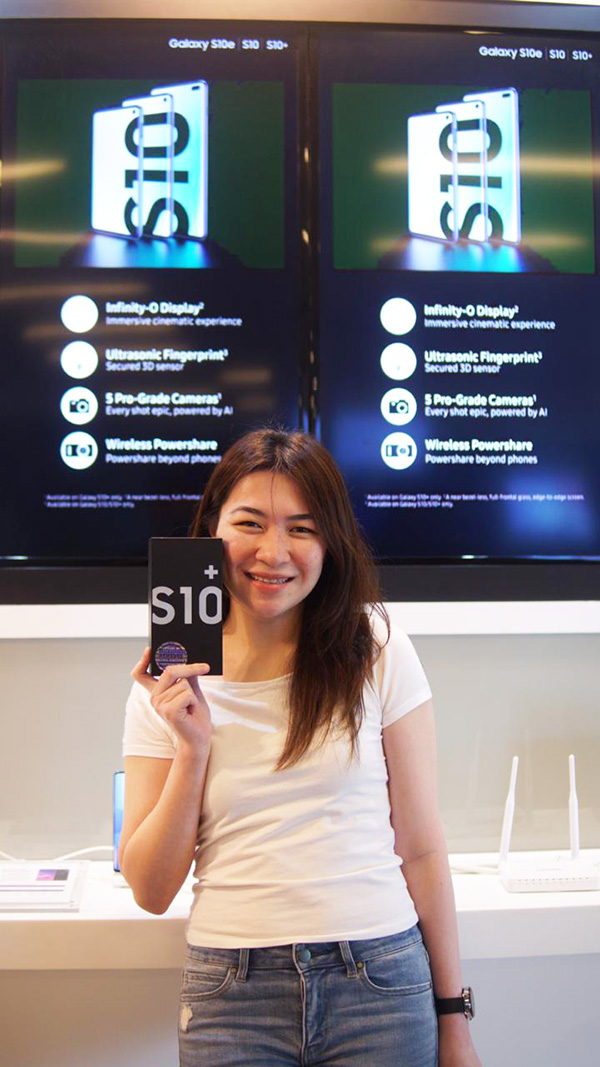
Farah Saiman is a proud S10+

Khaliq Roziman has converted from IOS to Android with the S10
The 4G postpaid phone plans of the Samsung Galaxy S10 family flagship models offer various monthly subscriptions and upfront payments. Customers looking for an unlimited data, voice and text plan retailed at $85 or $105 monthly, can grab the Samsung Galaxy S10e for an upfront price for as low as B$242.
DSTIncomm, a retail subsidiary of DST, also reported high sales since its preorder release with more stock coming in this week due to high customer demand. DSTIncomm sells both boxsets and DST’s 4G phone plans.
The Samsung Galaxy S10 comes with a stunning new design, crystal clear screen, the world’s first ultra-sonic finger print scanner and super-sharp triple lens camera. Among other highlights include the wireless powershare giving S10 users the ability to share power with their friend’s device or charge a Samsung Bud at the same time.
For more information on the latest phone plans and other products from DST, visit dst.com.bn

Here is the first customer at of the Phone Bundle at DST’s Airport Mall branch last weekend

I was lucky enough to get a bundle set of the S10e
Baiduri Masters 2019 MoU

Mr. Andrew Young, Deputy General Manager, Operations Management Division and Diversification and Strategic Development of Baiduri Bank cum President of the Organising Committee of Baiduri Masters 2019, Ms. Hazizah Osman, Acting General Manager of Brunei Press Sdn Bhd, Mr. Pierre Imhof, Chief Executive Officer of Baiduri Bank, Mr. Albert Lau, Chief Executive Officer of QAF Brunei Sdn Bhd, Mr. Siva Kumar Krishnan, General Manager of QAF Auto Sdn Bhd, Lahiru de Silva, Acting Deputy General Manager of Porsche Brunei and Suzie Houng, Senior Manager of Finance & Operations at Brunei Press Sdn Bhd during the MoU of the 24th edition of Baiduri Masters Charity Golf Tournament yesterday

Mr Pierre Imhof, Chief Executive Officer of Baiduri Bank giving his welcoming remark
Brunei’s most prestigious golfing event of the year, the Baiduri Masters Charity Golf Tournament, now in its 24th edition, is set to take place over two weekends in April. A signing ceremony was held at the QAF Centre in Beribi this morning to mark the start of the pre-tournament events.
During the Partnership Signing Ceremony, Mr Pierre Imhof, Chief Executive Officer of Baiduri Bank, in his opening remarks, said, “Our aim in organising the Baiduri Masters Charity Golf Tournament has always been to support the community and make a difference to those in need with the help of our golfers since the very beginning. This year is no different. Last year, we were able to raise and donate BND 81,000 to six organisations dedicated to helping the special needs integrate into society.”
The organisations were SMARTER Brunei, Learning Ladders Society, Pusat Ehsan Al-Ameerah Al-Hajjah Maryam, Children’s Cancer Foundation (YASKA), Child Development Centre RIPAS and Dana Hospital RIPAS.
Through the support of the strategic partners, QAF Brunei Sdn Bhd, QAF Auto Sdn Bhd and QAF Eurokars Sdn Bhd, the highly-anticipated hole-in-one car prizes were revealed: a Porsche Macan, BMW 520i, and a Mini Cabriolet. Besides the three luxury cars, golfers will also stand the chance to win cash prizes, including a BND 20,000 hole-in-one cash prize, as well as other tournament prizes for the Baiduri Masters 2019.

Signing between Baiduri Bank and QAF Brunei Sdn Bhd

Signing between Baiduri Bank and Brunei Press Sdn Bhd
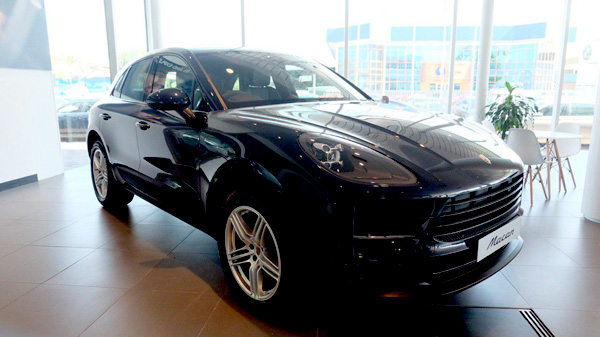
A Porsche Macan as one of the prizes for hole-in-one

BMW 520i and a Mini Cabriolet also as prizes for hole-in-one
The Memorandum of Understanding (MOU) signing ceremony began with a signing between the Baiduri Bank Group and Brunei Press to appoint Borneo Bulletin and Media Permata as the Official Media Partner for the event. This was followed by a signing between the Baiduri Bank Group and QAF Brunei Sdn Bhd, QAF Auto Sdn Bhd and QAF Eurokars Sdn Bhd for the provision of the three vehicles as hole-in-one prizes.
Mr. Albert Lau, Chief Executive Officer of QAF Brunei Sdn Bhd, and Ms. Hazizah Osman, Acting General Manager of Brunei Press Sdn Bhd signed on behalf of their organizations respectively while Mr. Pierre Imhof, Chief Executive Officer of Baiduri Bank signed on behalf of the Baiduri Bank Group.
Mr. Siva Kumar Krishnan, General Manager of QAF Auto Sdn Bhd, Ms. Suzie Houng, Senior Manager of Finance & Operations at Brunei Press and Mr. Andrew Young, Deputy General Manager, Operations Management Division and Diversification and Strategic Development of Baiduri Bank cum President of the Organising Committee of Baiduri Masters 2019 signed as witnesses respectively.
Registration for the Baiduri Masters will begin on 13 March 2019. The tournament weekends are from 12 to 14 April 2019 and 19 to 21 April 2019. A prize presentation dinner will be held at the end of the tournament.
More details of the tournament will be provided through Baiduri Bank’s website, social media outlets as well as newspaper articles. Alternatively, for more information, please contact the Baiduri Customer Helpline at 244 9666.
The 4th Shell Helix Branded Workshop

Management of Brunei Shell Marketing with the management of Chua Automobile Repairing and Servicing (Chua Auto) at the launch of Chua Auto as Shell Helix Branded Workshop yesterday

Mr. Chua Kee Hoe, the sole proprietor of Chua Auto, Pg. Shamhary bin Pg Dato Paduka Hj Mustapha, Managing Director of Brunei Shell Marketing, Mr. See Shieng Meng, Manager of Chua Auto and Mohd Adini Mohd Daini, Head of Branding and Communications of Brunei Shell Marketing officiating the launch with a ribbon cutting.
It is slowly growing, the branding of Shell as they turned some of the local workshops as Shell Helix Branded Workshop. Yesterday saw the 4th of its kind as Chua Automobile Repairing and Servicing (Chua Auto) launched as a Shell Helix Branded Workshop which is located at the heart of Gadong commercial area.
The company has been in operation in Gadong since the 1980s and it has a very strong customer base because of the owner, Mr. Chua Kee Hoe, has a reputable relationship with his loyal customers. Most of the cars handled are continental cars and their customers have always been very satisfied with their service.
Chua Auto has also a lasting relationship with Brunei Shell Marketing Sdn Bhd as the workshop has providing and purchasing Shell Lubricants since 2000. Chua Auto has always strived the mission of providing high quality service to customers by supplying genuine Shell Lubricants and having experienced technicians.
Now Chua Auto being the 4th Shell Helix Branded Workshop, there will be more workshops in the pipeline and this is a good sign for customers as these will give more confidence because of the Shell brand.
BSM initiated the Shell Helix Branded Workshop programme with the vision of supporting the relationship of workshops with their customers in an environment which reassures consumer that the products on sale are genuine and the service is excellent and reliable. This, in a way, increases customer satisfaction.
Present during the launch were Mr. Chua Kee Hoe, the sole proprietor of Chua Auto, Pg. Shamhary bin Pg Dato Paduka Hj Mustapha, Managing Director of Brunei Shell Marketing, Mohd Adini Mohd Daini, Head of Branding and Communications of Brunei Shell Marketing and Mr. See Shieng Meng, Manager of Chua Auto.
You can visit their workshop at Bangunan Hj Tahir. It’s a shop located located on the hill above Papparich in Gadong.

The first car being serviced after the launch

Genuine Shell Lubricants at Chua Auto

Group photo with the attendees

